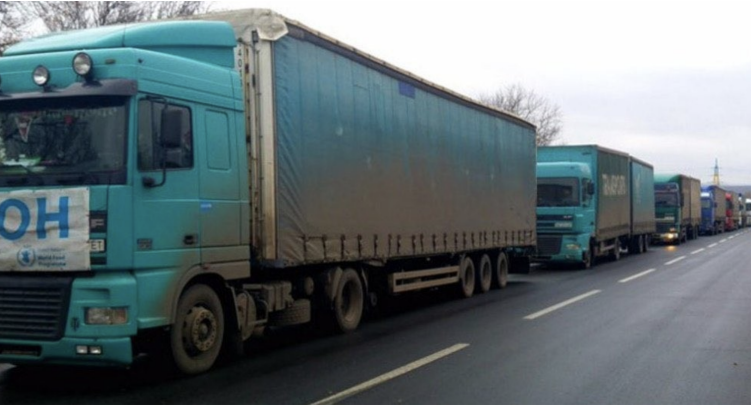The Humanitarian Response in Ukraine – and Why Professional Logistics Matter
As Ukrainian civilians suffer under military attack, the international humanitarian community has launched its response.

As Ukrainian civilians suffer under military attack, the international humanitarian community has launched its response. Calls for donations remind us that life-saving goods are urgently needed, but it is logistics which bring these to the needy. Just as important as the fund-raising is the supply chain which works behind the scenes. To help us understand, we draw attention to four key aspects of successful humanitarian logistics:
1. Preparedness is vital. This includes pre-positioning, which means that essential materials like food, medicine, or blankets have been procured and stored in anticipation of needs. When war broke out in Ukraine, external page UNICEF, for example, was able to tap existing stores of medical supplies and personal protective equipment from their warehouse in Copenhagen. It also had blankets and warm clothes stocked and ready to ship from a location in Turkey. In peacetime, pre-positioning may feel wasteful, but that investment bought precious time for those waiting in Kiev and Mariupol. We should be glad that donors like the United States Agency for International Development (USAID) or the Swiss Agency for Development Cooperation (SDC) paid for preparedness.
2. The logistics capacity has to be put in place. When every second counts, the responders need to know what to do, and how to do it right. This is a specific kind of preparedness. Professional humanitarian organizations have standard operating procedures, decision rules, and trained people who can deploy quickly. Because they were already operating in-country, an organization like the International Committee of the Red Cross (ICRC) could draw on trained staff and existing infrastructure to ramp up its emergency response. These local teams were joined by experienced staff from headquarters.
3. The coordination mechanisms of the UN Logistics Cluster are making multiple interventions more effective in an already chaotic situation. A big challenge in emergency response is that dozens of organizations descend upon a crisis region simultaneously. Everyone is eager to take action, and this can overburden local infrastructure and systems. To counteract duplication and mutual interference, external page the UN runs a cluster system to provide shared services, processes, and situation reports. Coordination meetings like the one which took place in Poland on Feb 27th (17 organizations participated), and later in Ukraine on Mar 3rd (which convened 31 organizations), showcase how critical it is to share information and align plans.
4. The system must be set up before responding. We may wonder why, when the war started on Feb 24th, fexternal page or example, UNICEF’s first delivery of supplies was on Mar 5th. This was surely the time it took to set up the access routes, arrange customs clearance for cross-border shipments into Poland and Ukraine, assess early demand signals, as well as engage the local partners who deliver in the dangerous last mile. It is no surprise that the external page first responders were those with local operations, like the Ukrainian Red Cross.
The frequency of humanitarian emergencies in the world is growing, and in Ukraine a crisis has hit a close neighbor. It is a sad fact that spontaneous and fragmented responses can do more harm than good. external page Please donate cash rather than send individual packages to the scene, where others must scramble to arrange the final delivery. It is through professional logistics management that good intentions and donations work to save more lives.
For more information on HumOSCM see www.HumOSCM.ethz.ch